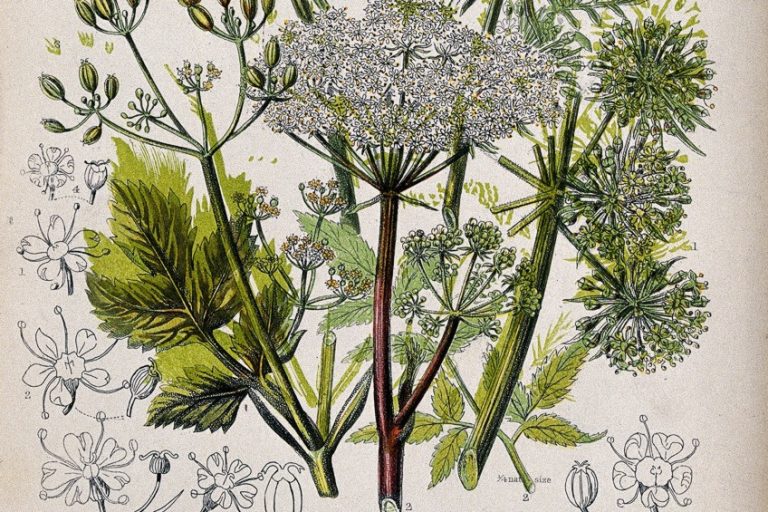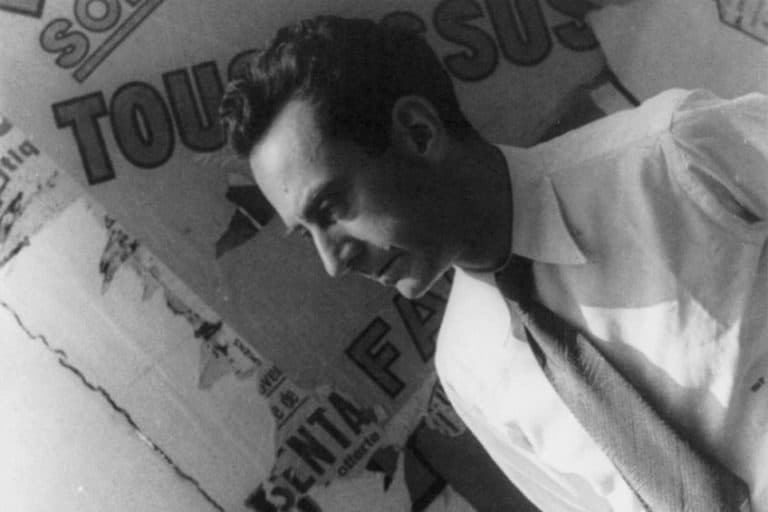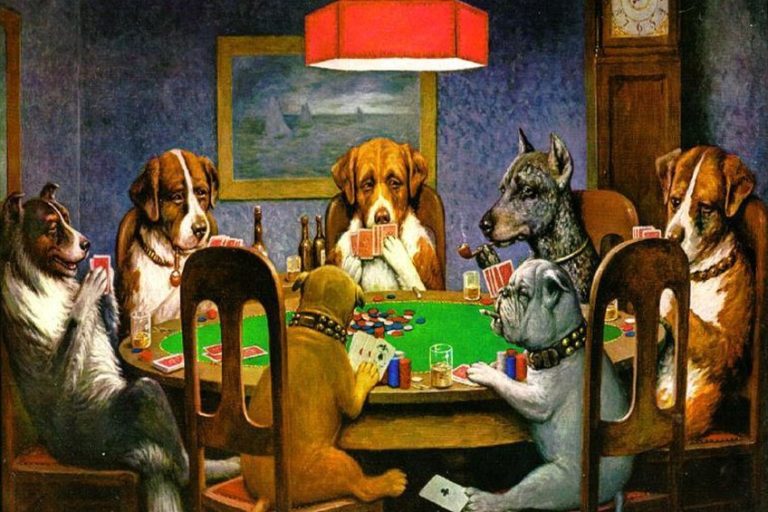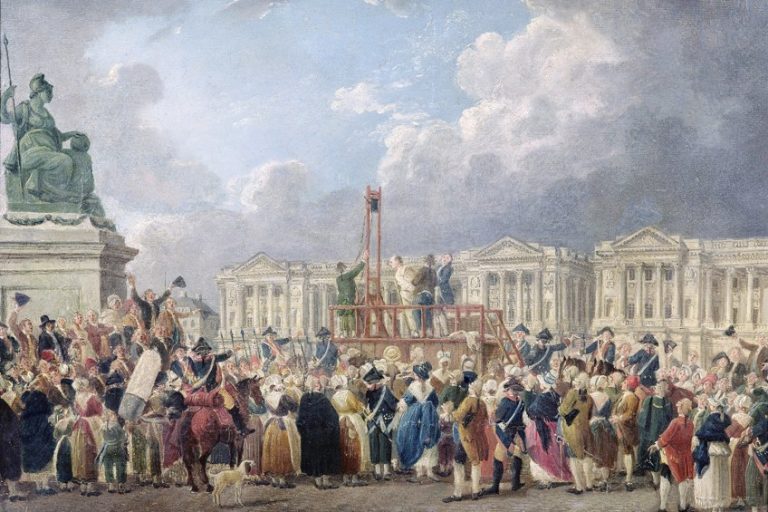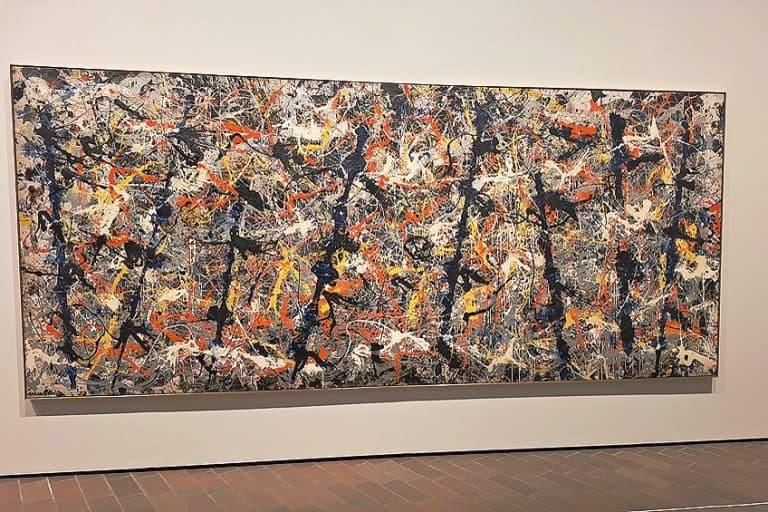Diego Rivera Murals – Discover the Mural Artist’s Greatest Pieces
Among the most renowned treasures of the art world are the famous murals by Diego Rivera, who was a visionary artist whose monumental works have left an unforgettable mark on the tapestry of art history. These colossal creations have sparked curiosity and wonder for generations. Rivera’s name is synonymous with both artistic excellence and social activism, as he was not only celebrated for his artistic prowess but also remembered for his unapologetic exploration of societal themes. In this article, we embark on a captivating journey to delve into the life and work of Diego Rivera, unraveling the mystery behind his renowned murals, and discovering where these captivating masterpieces can be encountered today. Join us as we answer the questions: “what was Diego Rivera famous for?”, “where can you find Diego Rivera’s large murals?”, and more.
More About the Artist: Who Was Diego Rivera?
| Date of Birth | 8 December 1886 |
| Date of Death | 24 November 1957 |
| Place of Birth | Guanajuato, Mexico |
| Nationality | Mexican |
| Periods | Mexican muralism, Cubism, Modern art, Realism, Impressionism, Post-Impressionism, and Social realism |
Diego Rivera, a towering figure in the world of art, left an indelible mark on the 20th century through his innovative and socially charged creations. His life’s journey, characterized by artistic evolution and unwavering commitment to political and social ideals, is a captivating narrative of talent, controversy, and cultural transformation. In this section, we delve deeper into the life of Diego Rivera, tracing his trajectory from a precocious young artist to a globally celebrated muralist whose work continues to inspire and provoke thought to this day.
Early Life and Training
Diego Rivera, born on December 8, 1886, in Guanajuato, Mexico, emerged as one of the most influential and controversial figures in 20th-century art. His journey as a painter started at a youthful age, demonstrating a prodigious talent for drawing.
He studied at the Academy of San Carlos in Mexico City, where he honed his technical skills under the guidance of prominent Mexican painters.

Later, he received a scholarship to study in Europe, where he immersed himself in the European art scene, particularly in Spain and France, and was profoundly influenced by the works of the Old Masters and the burgeoning Cubist movement.
Early Artworks
Upon his return to Mexico, Rivera’s art underwent a transformation. He began to infuse his work with elements of Mexican culture and tradition, a pivotal shift that set the stage for his future groundbreaking murals. His early paintings, such as Zapatista Landscape (1915) and Man at the Crossroads (1934), already displayed his penchant for social and political commentary, depicting the struggles of the Mexican people, laborers, and indigenous populations.
These works foreshadowed the themes that would dominate his career and earned him recognition as a prominent artist in Mexico.
Major Career Achievements
Diego Rivera’s career reached its zenith with his large-scale mural projects. He became an iconic figure in the Mexican muralism movement, which aimed to bring art to the masses and promote social and political ideals through public art. His monumental murals can be found in numerous public buildings throughout Mexico, the United States, and other countries.
Notable achievements include his frescoes at the National Preparatory School in Mexico City, the Ministry of Public Education, and the Palacio de Bellas Artes.

One of his most significant achievements was the creation of the Rivera Court at the Detroit Institute of Arts, where he painted the famous Detroit Industry Murals (1932-1933). These murals vividly portrayed the convergence of industry and humanity, celebrating the power of labor while addressing complex social issues.
Rivera’s ability to blend intricate symbolism with accessible visual narratives made his murals both artistically compelling and politically charged.
Diego Rivera’s Murals: A Reflection of Mexican Socio-Political Climate
Diego Rivera was not only a masterful artist but also a fervent social commentator who used his talent to reflect and influence the socio-political climate of his time. Rivera’s career spanned much of the tumultuous 20th century, during which Mexico underwent significant political and social upheaval. His murals, which adorn public buildings across Mexico and beyond, provide a fascinating window into the complex, ever-changing landscape of Mexican society and politics.
The Mexican Revolution and Its Impact
The early 20th century was a period of profound transformation in Mexico. The Mexican Revolution, which began in 1910, aimed to overthrow the oppressive regime of Porfirio Díaz (1830-1915) and address deep-seated social, economic, and political inequalities.
It was a time of intense conflict and shifting alliances, but also of hope for a more just and equitable society.

Rivera’s art was deeply influenced by this revolutionary spirit. He witnessed the struggles of peasants, workers, and indigenous populations, and his early works, such as The Flower Carrier (1935), depicted the hardship and resilience of the Mexican people. Rivera was sympathetic to the revolutionary cause and aligned himself with the ideals of social justice and land reform that were central to the revolution’s goals.
The Mexican Muralism Movement
Rivera’s involvement in the Mexican muralism movement was a natural extension of his commitment to the revolutionary cause. Alongside fellow muralists like David Alfaro Siqueiros (1896-1974) and José Clemente Orozco (1883-1949), Rivera sought to bring art out of elite galleries and into the public sphere. This movement aimed to foster a sense of national identity and convey socio-political messages through large-scale murals that could be seen by all.
Rivera’s murals became a powerful means of communication during a time when many Mexicans were still largely illiterate.
He painted scenes of Mexico’s rich history, its indigenous cultures, and the struggles of the working class. His works in the National Preparatory School, the Ministry of Public Education, and the Palacio de Bellas Artes served as visual narratives of Mexico’s past and present, emphasizing the importance of education and the empowerment of the working class.
Controversy and Critique
While Rivera’s murals celebrated Mexican culture and the ideals of the revolution, they were not without controversy. His outspoken support for communism and his close association with figures like Leon Trotsky (1879 – 1940) drew the ire of conservative elements in Mexican society and even led to the defacement of some of his murals. One of his most well-known and contentious murals, the Man at the Crossroads, commissioned for the Rockefeller Center in New York City in 1933, was ultimately demolished because of its inclusion of Lenin and other socialist symbols.
The incident highlighted the tension between Rivera’s political beliefs and his artistic career.

Famous Murals by Diego Rivera
Diego Rivera’s artistic legacy is most prominently etched in the monumental scale and profound impact of his murals. His mastery of the fresco technique and his unflinching commitment to addressing critical societal themes have left an enduring imprint on the world of art. In this section, we embark on a captivating journey to explore some of the most famous Diego Rivera murals, each a vivid tapestry that weaves together history, culture, and the human condition.
Creation (1922)
| Title | Creation |
| Date | 1922 |
| Medium | Fresco and gold leaf |
| Dimensions (cm) | Various |
| Location | San Ildefonso College, Mexico City, Mexico |
Diego Rivera’s mural, titled Creation, is a multi-layered and allegorical masterpiece that seamlessly melds Mexican, Judeo-Christian, and Hellenic influences. Within this composition, a plethora of allegorical figures such as Faith, Hope, Charity, Education, and Science grace the canvas, each bearing distinctively Mexican features, adding a unique cultural dimension to the artwork. Notably, the figure of Song is a portrayal of Guadalupe Marin (1895-1983), who would later become Rivera’s second wife.
Rivera’s artistry is further enriched through the meticulous use of gold leaf and the imposing, stretched forms of the depicted figures, showing the profound influence of Italian and Byzantine art on his artistic evolution.
Rivera’s mural Creation contains elements or symbols that reflect his communist beliefs and social commentary. The mural’s core themes are a kind of “condensed version of human history”, in the artist’s words. He wanted to depict the birth of science and the arts through a traditional Mexican lens.

Rivera’s willingness to use his art as a means of political expression and activism is evident in his early work. Creation can be seen as an early example of his commitment to using art to convey powerful political messages and advocate for social change, as it promotes Rivera’s patriotic spirit. It set the stage for his future mural projects, which would continue to explore socio-political themes.
The use of the encaustic technique in Creation suggests that Rivera was experimenting with different artistic methods at this early stage in his career.
Encaustic involves painting with pigments mixed with heated beeswax and resin, which can create a lustrous and layered effect. This experimentation may have contributed to the mural’s significance in Rivera’s artistic development.
In the Arsenal (1928)
| Title | In the Arsenal |
| Date | 1928 |
| Medium | Fresco |
| Dimensions (cm) | 433 x 400 |
| Location | Secretariat of Public Education Main Headquarters, Mexico City, Mexico |
Rivera’s mural, In the Arsenal, is one of his most celebrated works. It employs striking and vibrant colors to narrate the story of the Mexican Revolution. This piece is part of Rivera’s series titled Political Views of the Mexican People, in which he passionately supports the Workers’ movement, a prevalent theme throughout the 20th century. The red band at the top of the painting bears the word “Corrido,” alluding to Rivera’s own Corrido song titled “So will be the proletarian revolution.”
Throughout the mural, Rivera meticulously weaves his political beliefs into the canvas, showcasing a multitude of significant figures.
Central to the composition is his wife, Frida Kahlo, who stands at the heart of the narrative, distributing weapons to the revolutionary soldiers, likely representing the working class who decided to join the Agrarian revolution. Another notable figure is Leon Trotsky, the Russian revolutionary who sought refuge with Rivera and Kahlo during his Mexican exile.
Rivera’s mural is a tapestry of personalities and ideals. On the far left, he portrays David Alfaro Siqueiros, a Mexican social realist painter, while on the right, Tina Modotti (1896-1942), an Italian photographer, actress, and revolutionary activist, stands alongside her lover Julio Antonio Mella (1905-1929), a Cuban revolutionary who fought against the Cuban dictator Machado (1869 – 1939).
Mella met a tragic fate, being murdered in the streets while walking with Modotti. His wife was accused of orchestrating the assassination, but Rivera’s influence reportedly played a role in Modotti escaping charges.
Intriguingly, behind the couple and gazing at Modotti, stands Vittorio Vidali (1900-1983), a Stalinist agent. Vidali later became Modotti’s husband, raising strong suspicions that he might have been Mella’s actual murderer. This intricate mural, filled with political and personal narratives, showcases Rivera’s artistic genius and his ability to translate his beliefs and complex relationships onto the canvas.
History of Mexico: From Conquest to the Future (1929 – 1935)
| Title | History of Mexico: From Conquest to the Future |
| Date | 1929 – 1935 |
| Medium | Fresco |
| Dimensions (cm) | 7000 x 900 |
| Location | Palacio Nacional, Mexico City, Mexico |
History of Mexico unfolds like a chronological tapestry of Mexican history. It begins on the left with ancient Mesoamerican civilizations, such as the Maya and Aztecs, depicting their culture, mythology, and agricultural practices. It then transitions to the Spanish conquest, showcasing the clash of civilizations and the brutality of colonialism. The central portion portrays the struggles of the Mexican people during the Mexican Revolution (1910 – 1920), with depictions of revolutionary figures like Emiliano Zapata (1879 – 1919) and Pancho Villa (1878 – 1923).
Finally, the mural moves towards the present, illustrating the building of modern Mexico, including industrialization and social progress.
Rivera’s mural serves as a potent political statement. It conveys his strong Marxist beliefs and advocacy for the rights of the working class and indigenous populations. The inclusion of laborers, peasants, and indigenous people in various scenes emphasizes their role in shaping Mexico’s history and underscores the need for social and economic justice.

The mural reinforces a sense of Mexican identity and pride. By celebrating pre-Columbian cultures and the struggle for independence, Rivera promotes a collective national consciousness. He highlights Mexico’s unique blend of indigenous and European influences, emphasizing the importance of embracing both aspects of the nation’s heritage.
The mural’s composition is sprawling and complex, divided into several distinct sections, each corresponding to a different historical period. Rivera’s skillful use of scale and perspective allows the viewer to navigate through time and history seamlessly.
Rivera’s use of vibrant colors is a striking feature of the mural. He employs a rich array of hues to evoke the diverse landscapes, cultures, and emotions of Mexico’s history. Earthy tones for the ancient civilizations, rich blues and greens for the natural world, and bold reds and oranges for the revolutionary scenes contribute to the mural’s visual impact.
The mural is teeming with intricate details that reflect Rivera’s meticulous craftsmanship. From the intricate patterns on the clothing of indigenous people to the architectural details of colonial buildings, every element contributes to the narrative and historical accuracy. The mural is replete with symbolism. For instance, the inclusion of the Eagle and Snake, the symbol of the Aztec empire, signifies Mexico’s enduring national identity. Rivera’s portrayal of workers and peasants holding tools and banners symbolizes their agency and struggle for justice.
Detroit Industry (1932 – 1933)
| Title | Detroit Industry |
| Date | 1932 – 1933 |
| Medium | Fresco |
| Dimensions (cm) | Various |
| Location | Detroit Institute of Arts, Michigan, United States |
Detroit Industry is, at its core, a celebration of industry and technological progress. It reflects the industrial boom that characterized Detroit during this period, particularly in the automotive industry. The mural highlights the significance of manufacturing and innovation as pillars of American society.
While Rivera celebrates industry, he also provides a critical perspective. He does not shy away from depicting the harsh realities of labor, including the strenuous work of assembly line workers.
The mural alludes to the exploitation of laborers and the dehumanizing aspects of mass production. This dual approach captures the complexities of industrialization, recognizing its achievements while questioning its social implications. Rivera’s mural reflects the cultural diversity of Detroit, with references to African, European, and Native American cultures. He emphasizes the idea of a melting pot, where people from various backgrounds contribute to the industrial and cultural fabric of the city. This theme of cultural synthesis underscores the idea of unity and collaboration in the face of industrialization.
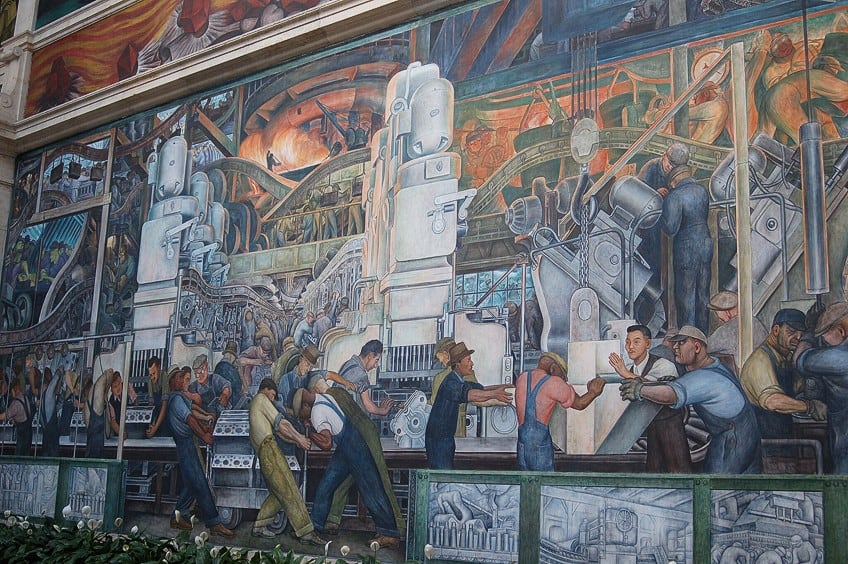
Detroit Industry is divided into two main panels, one depicting the North Wall and the other the South Wall. Each panel is packed with complex details and symbolism. The North Wall focuses on technology, with images of gears, machinery, and scientific instruments – it explores the relationship between man and the machine. The South Wall accentuates the significance of technology in the future.
Rivera employs a wide range of colors, from muted earth tones to vibrant reds and blues. The color scheme is carefully chosen to evoke the warmth of human labor and the coolness of machinery. The contrast between warm and cool colors creates a dynamic visual impact.
Detroit Industry is rich in detail, with intricate depictions of machinery, anatomical studies, and historical references. Rivera’s attention to detail enhances the realism of the scenes and adds layers of meaning to the artwork. Rivera incorporates numerous symbols throughout the mural. These symbols include the portrayal of human embryos in jars, symbolizing the intersection of science and industry, and the image of a cross-section of the earth, denoting the interconnectedness of all life.
Man Controller of the Universe (1934)
| Title | Man Controller of the Universe |
| Date | 1934 |
| Medium | Fresco |
| Dimensions (cm) | 485 x 1145 |
| Location | Palacio de Bellas Artes, Mexico City, Mexico |
Man Controller of the Universe, also known as Man at the Crossroads, celebrates human achievements in science, technology, and industry. The central figure, a strong and muscular laborer, holds the controls of a complex machine, symbolizing humanity’s mastery over the forces of nature and technology.
This reflects Rivera’s optimism about the potential of science and industry to improve society. While celebrating human achievements, Rivera also addresses social issues.
Surrounding the central figure are depictions of workers, scientists, and everyday people. Rivera highlights the diversity of the human experience, emphasizing the importance of collective efforts in shaping the world. He also alludes to the disparities in wealth and power, with figures of wealth and privilege portrayed alongside workers.

Man Controller of the Universe references key historical and political events. In the upper left corner, he depicts Lenin, the Russian revolutionary leader, as a symbol of socialist ideals. This reference, combined with other political and controversial elements, contributed to the mural’s original removal from the Rockefeller Center.
The mural’s composition is dynamic and symmetrical. The central figure, the man controlling the universe, is surrounded by a circular arrangement of scientists, workers, and various symbolic elements. This circular arrangement creates a sense of unity and interconnection among the different elements of society.
Rivera uses a bold and vibrant color palette. Warm tones like reds and oranges dominate the composition, creating a sense of energy and dynamism. These colors contrast with cooler blues and greens, adding depth and contrast to the mural. Rivera’s attention to detail is evident in the intricate machinery, scientific instruments, and architectural elements that populate the mural. Each detail contributes to the overall narrative and symbolism of the artwork.
The mural is filled with symbolism, from the mechanical components representing industrialization to the symbolic imagery of the microscope and the embryo, denoting scientific exploration and the mysteries of life. The presence of famous figures like Lenin and the inclusion of classical motifs further enrich the mural’s symbolism.
Pan-American Unity (1940)
| Title | Pan-American Unity |
| Date | 1940 |
| Medium | Fresco |
| Dimensions (cm) | 670 × 2,260 |
| Location | Golden Gate International Exposition, San Francisco’s Treasure Island, California, United States |
As the title suggests, Rivera’s mural Pan-American Unity is a celebration of Pan-Americanism, emphasizing unity and cooperation among the countries of the Americas. It is also known as The Marriage of the Artistic Expression of the North and of the South on This Continent. At the time of its creation, the world was grappling with the challenges of World War Two, and the mural was intended to promote goodwill and solidarity among the nations of the Americas.
Rivera’s mural features numerous historical and cultural references from both North and South America. It includes iconic figures such as George Washington (1732 – 1799) and Abraham Lincoln (1809 – 1865), as well as indigenous and folkloric elements representing the diverse cultures of the Americas.
This reflects Rivera’s belief in the interconnectedness of the continent’s history and traditions. Rivera’s murals often included social and political commentary, and Pan-American Unity is no exception. While celebrating unity, the mural also acknowledges the struggles and inequalities faced by various groups, including indigenous people, laborers, and marginalized communities. This dual approach of celebration and critique is a hallmark of Rivera’s work.
The mural’s composition is expansive and dynamic, covering a large curved wall. It features multiple vignettes and scenes arranged in a flowing narrative. Rivera’s use of space and scale creates a sense of movement and continuity as viewers follow the various elements of the mural.
Rivera’s use of color is rich and striking, with a wide range of hues. The mural includes warm earthy tones, cool blues and greens, and vivid reds and yellows. These colors contribute to the visual richness and energy of the mural.
Rivera’s attention to detail is evident in the intricate depictions of historical figures, cultural symbols, and everyday life. Each element is carefully rendered to convey its significance within the overall narrative of the mural. The mural is rich in symbolism, with various elements representing different aspects of Pan-American culture and history. This includes references to indigenous art, architecture, and mythology, as well as depictions of technological progress and social justice movements.
Dream of a Sunday Afternoon in Alameda Park (1947)
| Title | Dream of a Sunday Afternoon in Alameda Park |
| Date | 1947 |
| Medium | Fresco |
| Dimensions (cm) | 1560 x 470 |
| Location | Museo Mural Diego Rivera, Mexico City, Mexico |
The mural serves as a panoramic reflection on Mexican history and culture. Rivera populates the mural with historical figures, iconic characters, and symbols representing different eras. It encapsulates centuries of Mexican identity, from pre-Columbian times to the modern era. As with many of Rivera’s works, Dream of a Sunday Afternoon in Alameda Park carries political undertones. It’s particularly evident in the inclusion of historical figures like Benito Juárez, the reformist president of Mexico, and Porfirio Díaz, the dictator.
These choices reflect Rivera’s commentary on Mexico’s turbulent political history, including its struggles for democracy and social justice.
The mural also explores societal issues, with depictions of marginalized and oppressed groups. The figure of La Catrina, a skeleton dressed as an upper-class woman, represents the social inequalities and the Mexican aristocracy’s detachment from the struggles of the working class. Rivera’s inclusion of indigenous people and everyday citizens underscores his commitment to highlighting their role in shaping Mexican culture.
The mural’s composition is expansive and complex, with a sense of continuous movement. Rivera arranges the characters and scenes along a curving path that guides the viewer through different periods of Mexican history. This composition allows for a dynamic narrative flow.
Rivera employs a dynamic color palette, characterized by bold and contrasting colors. Warm tones like reds and oranges dominate the mural, creating a sense of energy and vibrancy. Cool blues and greens are strategically used to balance the overall composition.
Rivera’s attention to detail is remarkable, especially considering the mural’s scale. Each character and element is meticulously rendered, with intricate facial expressions, clothing, and historical accuracy. This attention to detail enhances the mural’s narrative richness.
The mural is steeped in symbolism, with each character and scene representing various aspects of Mexican history and culture. The inclusion of La Catrina, the calavera dressed in European finery, symbolizes the blending of indigenous and European cultures in Mexico. The inclusion of historical figures like Diego Rivera himself and Frida Kahlo adds a layer of self-reflection to the mural.
In conclusion, Diego Rivera’s famous murals stand as enduring testaments to his artistic genius and his unwavering commitment to using art as a medium for social and political commentary. His monumental creations, which can be found in various locations across Mexico and the United States, have become integral parts of the cultural and historical landscapes of these nations. Diego Rivera’s remarkable ability to merge traditional artistic techniques with powerful narratives of labor, revolution, and unity is what he was famous for. These murals continue to inspire and engage viewers, inviting them to delve into the rich tapestry of history, culture, and social change that Rivera so brilliantly wove into his art.
Take a look at our murals by Diego Rivera webstory here!
Frequently Asked Question
What Was Diego Rivera Famous For?
Diego Rivera was (and still is) celebrated for his exceptional talent as a muralist and his unwavering commitment to using art as a powerful medium for social and political commentary. He became renowned for his large-scale, vibrant, and intricately detailed murals that celebrated Mexican culture, history, and the struggles of the working class. Rivera’s fame also stemmed from his political activism and advocacy for communism and social justice, making him a prominent figure in both the art world and the socio-political landscape of Mexico. His murals not only adorned public spaces, but also conveyed profound messages about unity, labor, and social equality, leaving an indelible mark on the art of the 20th century. Rivera’s enduring legacy lies in his ability to fuse art and activism, inspiring generations to use creativity as a means of addressing societal issues and advocating for positive change.
What Are Diego Rivera’s Most Famous Murals?
Diego Rivera’s most famous murals include Man at the Crossroads (1933), History of Mexico (1929 – 1935), Detroit Industry (1932 – 1933), and Pan-American Unity (1940). These iconic artworks are celebrated for their scale, complexity, and ability to convey powerful social and political messages, making them enduring symbols of Rivera’s artistic legacy.
Where Can You Find Diego Rivera’s Large Murals?
Diego Rivera’s murals can be found in various locations in Mexico and the United States. Some of the prominent sites include the National Palace and the Ministry of Public Education in Mexico City, where his History of Mexico (1929 – 1935) murals are located. In Detroit, Michigan, his Detroit Industry (1932-1933) murals adorn the Detroit Institute of Arts. Additionally, the Diego Rivera Theatre at the City College of San Francisco houses his Pan-American Unity (1940) mural. These significant artworks continue to attract visitors and art enthusiasts from around the world.
Nicolene Burger is a South African multi-media artist, working primarily in oil paint and performance art. She received her BA (Visual Arts) from Stellenbosch University in 2017. In 2018, Burger showed in Masan, South Korea as part of the Rhizome Artist Residency. She was selected to take part in the 2019 ICA Live Art Workshop, receiving training from art experts all around the world. In 2019 Burger opened her first solo exhibition of paintings titled, Painted Mantras, at GUS Gallery and facilitated a group collaboration project titled, Take Flight, selected to be part of Infecting the City Live Art Festival. At the moment, Nicolene is completing a practice-based master’s degree in Theatre and Performance at the University of Cape Town.
In 2020, Nicolene created a series of ZOOM performances with Lumkile Mzayiya called, Evoked?. These performances led her to create exclusive performances from her home in 2021 to accommodate the mid-pandemic audience. She also started focusing more on the sustainability of creative practices in the last 3 years and now offers creative coaching sessions to artists of all kinds. By sharing what she has learned from a 10-year practice, Burger hopes to relay more directly the sense of vulnerability with which she makes art and the core belief to her practice: Art is an immensely important and powerful bridge of communication that can offer understanding, healing and connection.
Nicolene writes our blog posts on art history with an emphasis on renowned artists and contemporary art. She also writes in the field of art industry. Her extensive artistic background and her studies in Fine and Studio Arts contribute to her expertise in the field.
Learn more about Nicolene Burger and the Art in Context Team.
Cite this Article
Nicolene, Burger, “Diego Rivera Murals – Discover the Mural Artist’s Greatest Pieces.” Art in Context. October 13, 2023. URL: https://artincontext.org/diego-rivera-murals/
Burger, N. (2023, 13 October). Diego Rivera Murals – Discover the Mural Artist’s Greatest Pieces. Art in Context. https://artincontext.org/diego-rivera-murals/
Burger, Nicolene. “Diego Rivera Murals – Discover the Mural Artist’s Greatest Pieces.” Art in Context, October 13, 2023. https://artincontext.org/diego-rivera-murals/.





